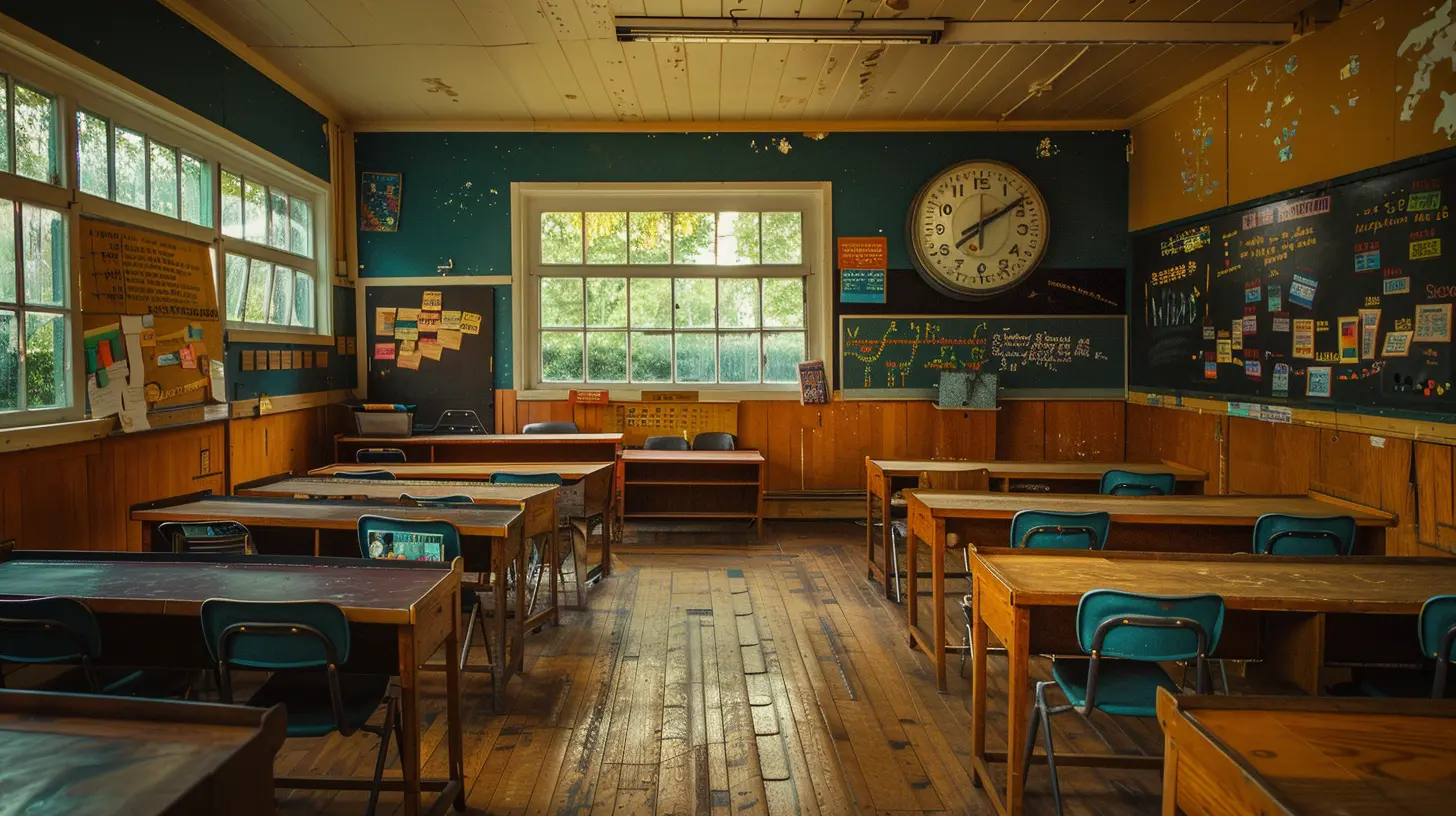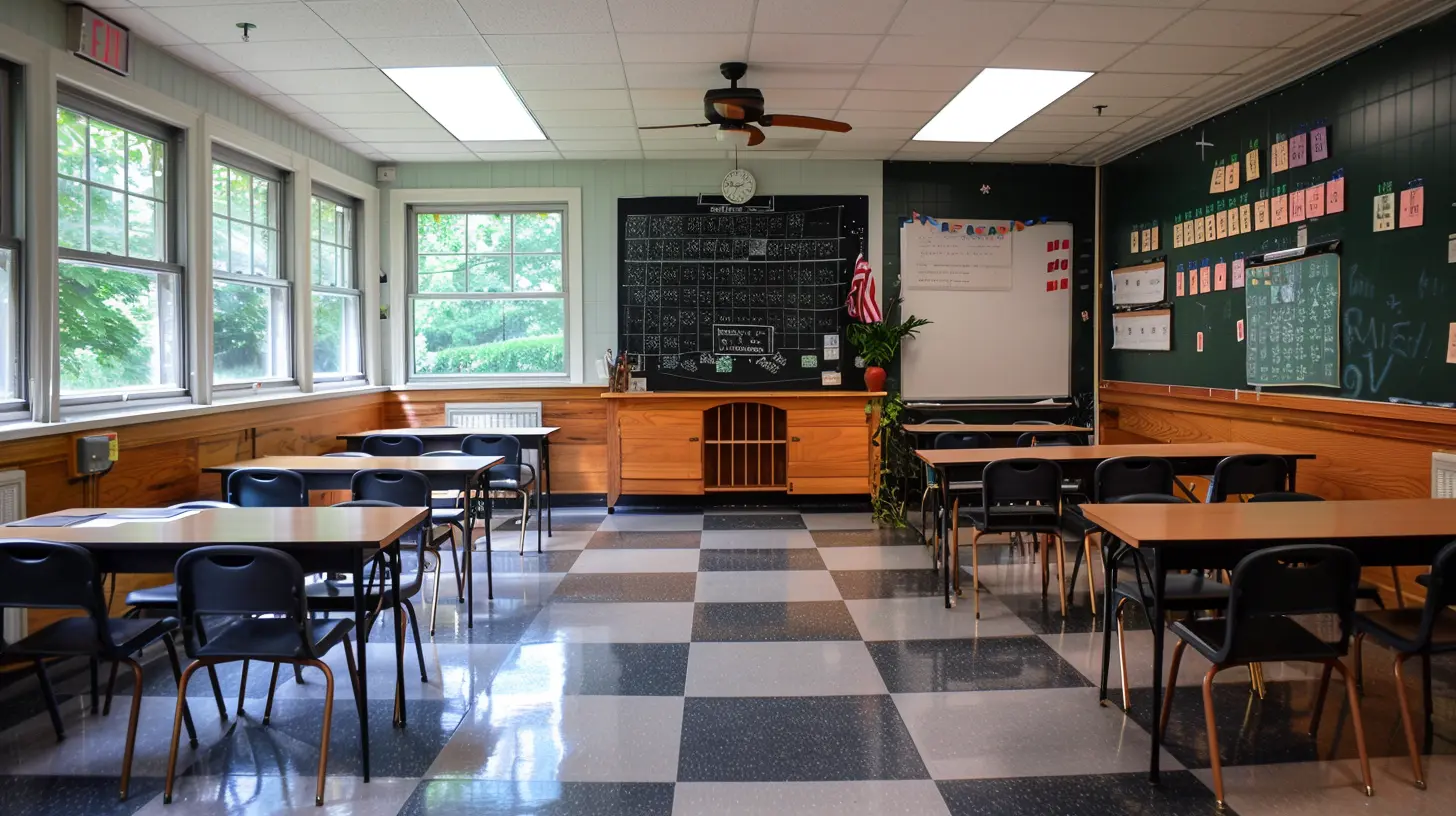Establishing Routines That Encourage Student Independence
11 November 2025
Let’s face it—teaching students how to be independent is one of the most rewarding (and sometimes challenging) parts of being an educator. You work hard, day in and day out, guiding your students to not just learn content but to own their learning. One of the most effective ways to do this? Establishing routines that encourage student independence.
In this article, we’ll dive into how structured routines can empower students to take charge of their learning, build self-confidence, and develop skills that'll benefit them for a lifetime. Whether you're a classroom teacher, homeschool parent, or school administrator, there’s something here for everyone to benefit from.
Why Is Student Independence So Important?
Let’s start with the “why.” Why does student independence even matter?Think about it: as adults, we're expected to manage our time, organize tasks, prioritize responsibilities, and meet deadlines. These skills don’t suddenly appear overnight—they're built over time, and the earlier we start helping students develop them, the better.
Independent learners tend to:
- Take more responsibility for their own learning
- Manage their time and workload better
- Show higher confidence and motivation
- Bounce back more easily from setbacks
In short, giving students opportunities for independence isn't just about making your teaching life easier (although, let's be honest, it certainly helps); it's about setting them up for long-term success.
The Power of Routines in the Classroom
So, how do we help students become independent? One word: routines.Routines are like the invisible scaffolding that supports everything happening in a classroom. They provide structure, predictability, and security. But most importantly, well-designed routines give students a framework within which they can operate more independently.
Now, I’m not talking about rigid, military-style routines. I’m talking about thoughtful, flexible systems that give students freedom within structure.
Here’s what makes routines so powerful:
- Consistency creates comfort. When students know what to expect, they feel safe and more willing to take risks.
- Structure births autonomy. Paradoxically, a clear routine gives students the mental space to make their own choices within guidelines.
- Habits build responsibility. By repeating positive behaviors daily, students begin to internalize them as habits.
Key Areas Where Routines Support Independence
Let’s break it down by specific areas where routines can nurture student independence. These are practical, real-life examples that you can implement in your educational setting.1. Morning Arrival Routine
Starting the day off on the right foot is crucial. A consistent morning routine sets the tone and helps students settle in.What it looks like:
- Greet the teacher and hang up backpacks
- Get out materials for the day (homework, notebooks, etc.)
- Begin a short, independent warm-up activity
Over time, students will complete these tasks automatically. They won’t need hand-holding, because they already know what’s expected.
🔁 Pro Tip: Use visual cues or checklists, especially for younger learners or students with special needs.
2. Transition Times
Transitions are often where things fall apart. But with routines? Smooth sailin’.What it looks like:
- A signal for attention (a bell, clapping pattern, or countdown)
- Clear directions before any movement
- Students clean up and move to the next task with minimal prompts
Building independence during transitions teaches students time management and responsibility. They’re no longer waiting for you to tell them every move—they’re making smart choices on their own.
3. Classroom Jobs
This one’s a game-changer. Assigning classroom jobs gives students ownership of their environment. It builds responsibility like nothing else.What it looks like:
- Students have weekly rotating roles—line leader, supply manager, tech helper, etc.
- Jobs are clearly defined and posted
- Students check their roles and fulfill them without reminders
When students know they’re trusted with real responsibilities, they rise to the occasion. It’s a small step with big impact.
4. Homework and Assignment Management
How often have we heard “I forgot my homework” or “I didn’t know it was due”?Creating routines around assignments boosts student accountability.
What it looks like:
- Use assignment notebooks or planners daily
- Build a habit of checking a homework board or online portal
- Set aside 5 minutes at the end of each day for students to write down assignments
Over time, students stop relying on reminders and start taking charge. It's like training wheels—you guide them until they can ride solo.
5. Self-Help and Problem Solving
Before jumping up and raising their hand for every snag, students should be encouraged to try solving problems independently. This builds grit and critical thinking.What it looks like:
- Implement a “Ask 3 Before Me” rule
- Set up a “Help Desk” station with resources: dictionaries, calculators, example problems
- Encourage peer collaboration when appropriate
Teaching students how to think through challenges before seeking help increases resilience and confidence. They start realizing they’re capable of more than they think.
6. Goal Setting and Reflection
Students can’t be independent without knowing where they’re headed. Helping them set goals gives them purpose.What it looks like:
- Weekly or monthly reflection journal time
- Conferences to set short- and long-term academic goals
- Visual goal trackers or progress charts
When students track their own progress, they’re more invested. They start to care more because they’re the ones steering the ship.
Tips for Implementing Routines That Stick
Okay, so you’re convinced that routines are key. But how do you make them actually stick?Here are some tried-and-true tips:
🧠 Teach It Like a Lesson
Don’t assume kids “just know” what to do. Teach the routine explicitly, model it, and practice it often.🔁 Practice, Practice, Practice
Repetition is the magic ingredient. Practice the routine until it becomes automatic. Be patient—it’ll pay off.📣 Use Visuals and Reminders
Visual schedules, posters, and anchor charts work wonders—especially for younger students. Keep routines visible and accessible.🙌 Celebrate Small Wins
When students follow routines independently, cheer them on! Positive reinforcement strengthens habits.🔄 Be Flexible and Reflective
No routine is set in stone. If something isn’t working, tweak it. Ask students for feedback and make it a collaborative process.How Families Can Help at Home
Encouraging independence isn’t just the educator’s job; families play a vital role too.Here’s how parents can support routines at home:
- Set up designated homework times and spaces
- Encourage kids to pack their own backpacks
- Use checklists or planners for chores and assignments
- Talk through challenges instead of solving them right away
When school routines are reinforced at home, they stick faster and deeper.
Addressing Challenges and Missteps
Let’s be real—building independence isn't always seamless.There will be:
- Students who resist routines
- Days when everything goes off the rails
- Moments of frustration
But that’s okay! The key is to see setbacks as part of the growth process. Every stumble is a learning opportunity—for you and your students.
Keep reflecting. Keep adjusting. Keep modeling independence. Over time, the effort pays off.
The Long-Term Benefits
So, what happens when routines that foster independence really take root?You get a classroom that hums with purpose. Students walk in knowing what to do. They take initiative. They show up prepared. They handle problems like champs.
More importantly, they leave your classroom better equipped for the world beyond school—ready to take on challenges with confidence, creativity, and resilience.
And that? That’s the dream.
Final Thoughts
Establishing routines that encourage student independence isn’t just about running a smoother classroom. It’s about empowering kids to believe in themselves. To take ownership. To become problem-solvers, not finger-pointers. To grow into the kind of people who don’t just succeed—they thrive.Remember, independence takes time. It grows in layers, like a mighty oak tree. Start with small, intentional routines. Be patient. Be consistent. Be encouraging.
And watch your students bloom.
all images in this post were generated using AI tools
Category:
Classroom ManagementAuthor:

Eva Barker
Discussion
rate this article
1 comments
Wilder McKibben
This article highlights the importance of routines in fostering student independence—essential for developing responsibility and self-management skills in learners.
November 12, 2025 at 5:07 AM

Eva Barker
Thank you for your insightful comment! I'm glad you found the article highlights the crucial role of routines in promoting student independence and responsibility.


